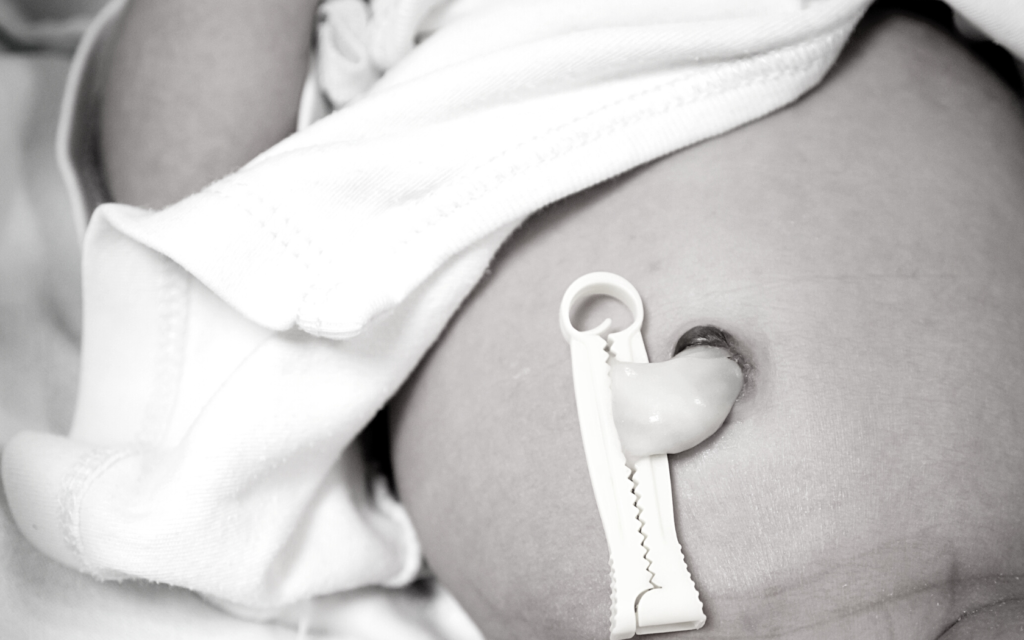Even before birth, a mother and her child share a bond as tight as a knot.
But there’s a different kind of tight knot that no mother wishes to share with her child.
We’re talking about umbilical cord knots.
These knots are dangerous for a fetus if left untreated. But is it possible to prevent umbilical cord knots? The good news is, yes – they are preventable. Let’s discuss what true knots are, and what doctors can do to prevent umbilical cord knot injuries.

What Is an Umbilical Cord Knot?
A true knot in the umbilical cord is a complication that can happen when the umbilical cord wraps and tightens into a knot. This restricts blood flow to the fetus, so it can be quite dangerous. In the worst cases, it can result in a stillbirth. That is, if the medical staff fails to detect and treat it properly, and in a timely manner. This “true knot” is a true umbilical cord knot; a knot of the umbilical cord. (Not around the amniotic sac (amniotic band) or baby (nuchal cord).) Thankfully, it’s a rare complication. And sometimes, something that looks like a true knot forms, but it’s… well, it’s not.
False Knots Vs True Knots
Sometimes a doctor detects a bulge in the umbilical cord that looks like a knot, but it isn’t. This is a false knot or pseudoknot.
False knots are structural variations in the umbilical cord. They can also stem from swollen blood vessels. They’re quite common and aren’t dangerous for the mother or her child.
A true knot in an umbilical cord is when the cord wraps around itself to form a knot. Some true knots are harmless and can untangle themselves. But if a knot tightens, it can decrease blood flow from the mother, or cut it off completely. This blood brings oxygen to the baby, so it’s vital for fetal development.
What is the Umbilical Cord?
The umbilical cord is a tube-like cord that brings oxygen and nutrients from the placenta to the fetus. As such, it’s critically important to the health of the fetus. It also transfers waste from the baby to the placenta. The question is, how does the umbilical cord get knotted?
True Knot Formation
The womb is far from a spacious penthouse suite. It’s more like an extra-cozy capsule hotel. So how is there enough space for a cord to get tangled into a knot? Research shows that most cord knots form during weeks 9-12 of pregnancy. During that time, there’s a lot of amniotic fluid for babies to move around in.
But the knot can get tighter as the baby grows. At a certain point, it might constrict blood flow, and stunt the baby’s growth. One sign that a knot is becoming problematic is when a baby is less active in the womb.
True knots can also form as a baby moves in the womb during labor and delivery. This is why doctors must keep a watchful eye on the fetal heart monitor (cardiograph). If a knot causes a decrease in blood flow, the baby’s heart rate will be abnormal. In that case, physicians should deliver the baby right away via an emergency C-section.
Risk Factors of Umbilical Cord Knots
True knots can be very dangerous. But here’s some good news: they occur in just 1-2% of all pregnancies.
Some women may have a higher risk of developing them. Medical providers should keep a closer watch on pregnancies with true knot risk factors.
Here are a few of those risk factors:
- Mother is over age 35
- Small baby
- Very active baby
- Long umbilical cords
- Multiple fetuses
- Twins share the same amniotic sac
- The baby is a male
- An excess of amniotic fluid (Polyhydramnios)
- The pregnancy isn’t the mother’s first
Amniotic fluid levels are naturally high between nine and twelve weeks. While this isn’t exactly a risk factor, most true knots form during this timeframe. But what happens when a true knot forms? What are the complications they cause?
True Knot Injuries
There’s nothing anyone can do to keep true knots from forming in a baby’s umbilical cord. But doctors can monitor for signs of them, and prevent true knot umbilical cord injuries.
Swift intervention can reduce the likelihood of brain damage or infant death. A doctor may be liable for medical negligence if they fail to monitor for true knots or fail to act when they detect one.
Umbilical cord knot complications are rare. If one forms during labor, doctors can order a C-section to keep the baby out of harm’s way. But leaving a knot untreated can cause irreparable damage. The tighter the knot, the higher the risk of oxygen deprivation. A baby who doesn’t receive enough oxygen to the brain can suffer serious injury.
These are possible long-term effects of umbilical cord knots:
- Seizures
- Learning disabilities
- Cerebral palsy
- Neurodevelopmental issues
- Behavioral and sensory issues
- Developmental delays
- Cognitive and motor skill impairments
- Neurological disorders
- Death

Taking Legal Action for Negligence-Related Cord Injuries
Babies with brain injuries from cord knots often require therapy and lifelong medical care. If your child suffered a true knot umbilical cord injury due to a doctor’s negligence, you should speak with a lawyer about filing a medical malpractice claim.
Why should you take legal action? There are four main reasons:
- It’s important to hold negligent healthcare workers accountable so they won’t repeat their mistakes.
- You may be able to recover monetary damages to pay for your child’s care.
- You can seek justice for the trauma inflicted on your family.
- You can get emotional closure. Birth injuries have profound emotional consequences for families, and pursuing legal action may help provide a sense of closure and validation.
True knot umbilical cord lawsuits are a sort of knot to untangle themselves. You’ll need plenty of evidence, such as hospital records and bills, to prove your case. Testimony from medical experts is essential as well. But don’t worry, you won’t need to scour the internet for experts to testify on your behalf. Your lawyer will find the right advisors for your case.
Before you begin the legal process, here’s one more thing to keep in mind. Each state has a limit for how long you can file a claim after your child suffered an injury. This is called the statute of limitations. In most states, it’s just 2-3 years.
So don’t wait to file. Let us put our experience with these types of lawsuits to work on your child’s behalf. Call the legal team at Hampton & King today.
True Umbilical Cord Knot FAQs
More common than you might think. Out of every 100 pregnancies, 1 involves some form of umbilical cord knot – not true knots always, but knots nonetheless.
Sadly, yes. If the knot tightens enough to restrict blood flow, it can lead to fetal distress, hypoxia (oxygen deprivation), and ultimately fetal demise. The good news is, it’s very rare for a true knot to cause a stillbirth.
Well, unfortunately, they can’t untangle it. What they can do, however, is understand the risk factors and closely watch the patient for complications. If they detect a knot, they’ll monitor the pregnancy especially closely, with a special emphasis on the third trimester.
They’re pretty rare. Less than 1% of all pregnancies end up with a true knot – they occur in 0.3-1.3% of all pregnancies. *
A true knot in the umbilical cord is a rare but dangerous condition where the cord loops and tightens into a knot. Sometimes, this restricts the flow of oxygen and nutrients to the baby and causes serious complications. While uncommon, monitoring for knots like this is crucial to ensure the well-being of the baby during pregnancy.




